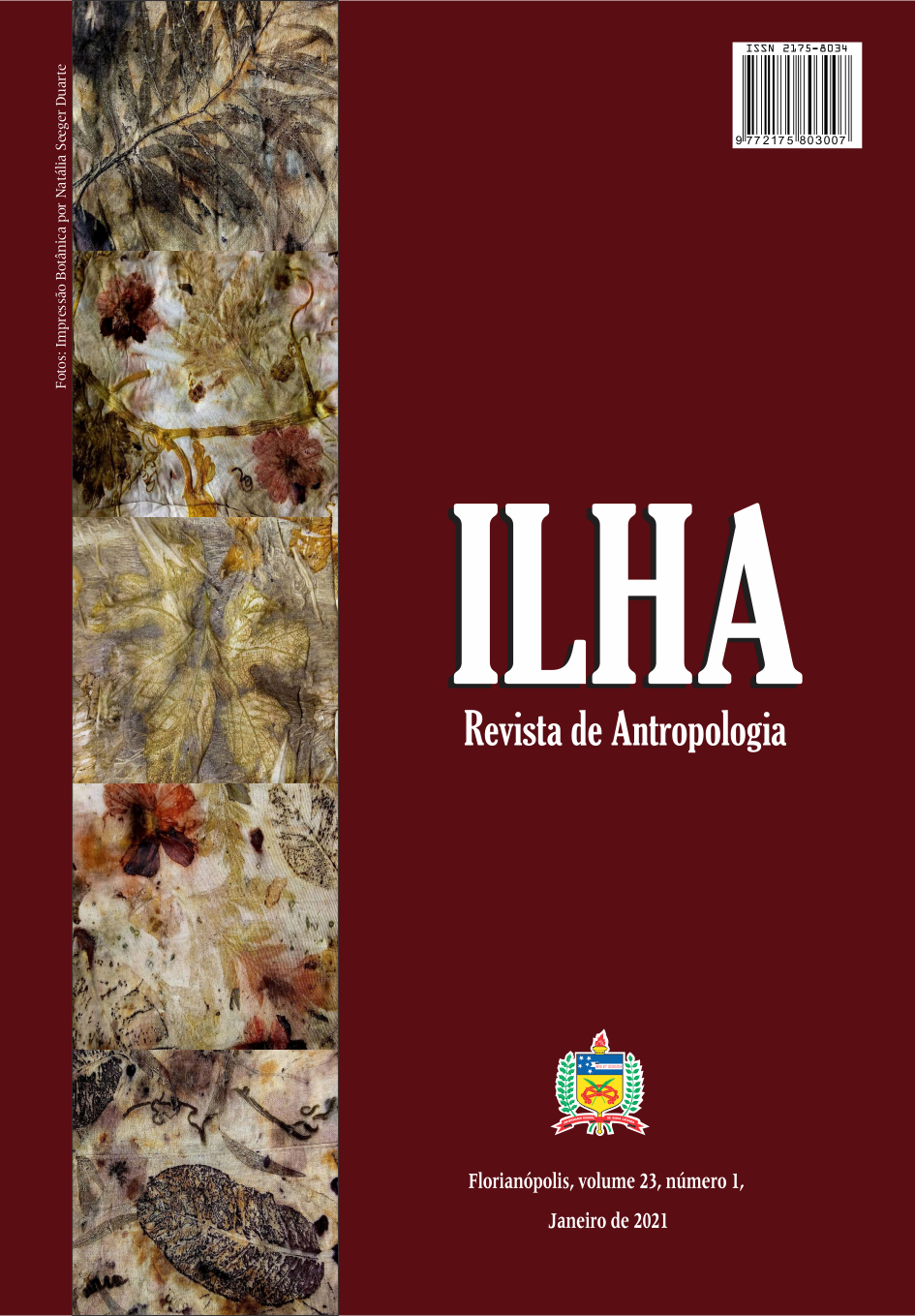O antropoceno mais que humano
DOI:
https://doi.org/10.5007/2175-8034.2021.e75732Resumo
Este ensaio expõe alguns dos insights sobre o Antropoceno que obtive no projeto Atlas Feral, um trabalho colaborativo que agrega mais de uma centena de cientistas, acadêmicos, artistas e escritores, de origens variadas, que trazem narrativas baseadas em suas experiências mais íntimas com a terra antropogênica. O Atlas Feral conta as aventuras dos colaboradores não-humanos do Antropoceno. Nossos sujeitos são seres vivos e não-vivos que, ao se emaranharem em projetos imperiais e industriais humanos, estão ajudando, em larga medida, a destruir a habitabilidade da terra.
Referências
ASHLEY, Russell Ngadiyali. Before, goannas were here forever. In: TSING, Anna et al (Org.). Feral atlas: the more-than-human Anthropocene. Stanford: Stanford University Press, 2020.
BRASIER, Clive. Introduced pathogens can evolve rapidly, increasing their virulence. In: TSING, Anna et al (Org.). Feral atlas: the more-than-human Anthropocene. Stanford: Stanford University Press, 2020.
BROWN, Kate. Plutopia: atomic cities, and the great soviet and American plutonium disasters. Oxford: Oxford University Press, 2013.
BROWN, Kate. Chernobyl is going global. In: TSING, Anna et al (Org.). Feral atlas: the more-than-human Anthropocene. Stanford: Stanford University Press, 2020.
CYPHER, Rachel. Love in the Anthropocene. Dissertation, Department of Anthropology, University of California, Santa Cruz, 2020.
EBRON, Paulla A. Slave ships were incubators for infectious diseases. In: TSING, Anna et al (Org.). Feral atlas: the more-than-human Anthropocene. Stanford: Stanford University Press, 2020.
EBRON, Paulla A. forthcoming. Making Tropical Africa in the Georgia Sea Islands. Manuscript in preparation.
FABIAN, Johannes.Time and the Other: How Anthropology Makes its Object. New York: Columbia University Press, 1983.
FOSTER, John Bellamy. Marx's Theory of Metabolic Rift: Classical Foundations for Environmental Sociology. The American Journal of Sociology, 105(2): 366–405, 1999
HADFIELD, Michael. Snails that eat snails. In: TSING, Anna et al (Org.). Feral atlas: the more-than-human Anthropocene. Stanford: Stanford University Press, 2020.
McNEIL, John. Mosquito Empires: Ecology and War in the Greater Caribbean, 1620-1914. Cambridge University Press, 2010.
MILON, Anne-Sophie; ZALASIEWICZ, Jan. The victims of carbon dioxide are starting to appear. In: TSING, Anna et al (Org.). Feral atlas: the more-than-human Anthropocene. Stanford: Stanford University Press, 2020.
NAGY, Kelsi. Plastics Saturate Us, Inside and Outside Our Bodies. In: TSING, Anna et al (Org.). Feral atlas: the more-than-human Anthropocene. Stanford: Stanford University Press, 2020.
PERFECTO, Ivette. Coffee rust spreads together with coffee plantations.In: TSING, Anna et al (Org.). Feral atlas: the more-than-human Anthropocene. Stanford: Stanford University Press, 2020.
POWELL, J. R.; TABACHNICK, W. J. History of domestication and spread of Aedes aegypti - a review. Mem. I. Oswaldo Cruz 108, suppl. 1 11–17, 2013.
TSING, Anna; MATHEWS, Andrew; BUBANDT, Nils. Patchy Anthropocene: Landscape Structure, Multispecies History, and the Retooling of Anthropology. Current Anthropology 60(20), 186-197, 2019.
VIVEIROS DE CASTRO, Eduardo. On Models and Examples: Engineers and Bricoleurs in the Anthropocene. Current Anthropology, 60(20), 296-308, 2019.
WEISS, Marissa. Unexpected Threats to Trees Can Be Traced to Wood Pallets. In: TSING, Anna et al (Org.). Feral atlas: the more-than-human Anthropocene. Stanford: Stanford University Press, 2020.
WRIGHT, Sue. I’ve lost the smell of elm dust. In: TSING, Anna et al (Org.). Feral atlas: the more-than-human Anthropocene. Stanford: Stanford University Press, 2020.
Downloads
Publicado
Como Citar
Edição
Seção
Licença
Copyright (c) 2020 Ilha Revista de Antropologia

Este trabalho está licenciado sob uma licença Creative Commons Attribution-NonCommercial 4.0 International License.
Os autores cedem à Ilha – Revista de Antropologia – ISSN 2175-8034 os direitos exclusivos de primeira publicação, com o trabalho simultaneamente licenciado sob a Licença Creative Commons Atribuição Não Comercial Compartilhar Igual (CC BY-NC-SA) 4.0 International. Esta licença permite que terceiros remixem, adaptem e criem a partir do trabalho publicado, desde que para fins não comerciais, atribuindo o devido crédito de autoria e publicação inicial neste periódico desde que adotem a mesma licença, compartilhar igual. Os autores têm autorização para assumir contratos adicionais separadamente, para distribuição não exclusiva da versão do trabalho publicada neste periódico (ex.: publicar em repositório institucional, em site pessoal, publicar uma tradução, ou como capítulo de livro), com reconhecimento de autoria e publicação inicial neste periódico, desde que para fins não comerciais e compartilhar igual.




